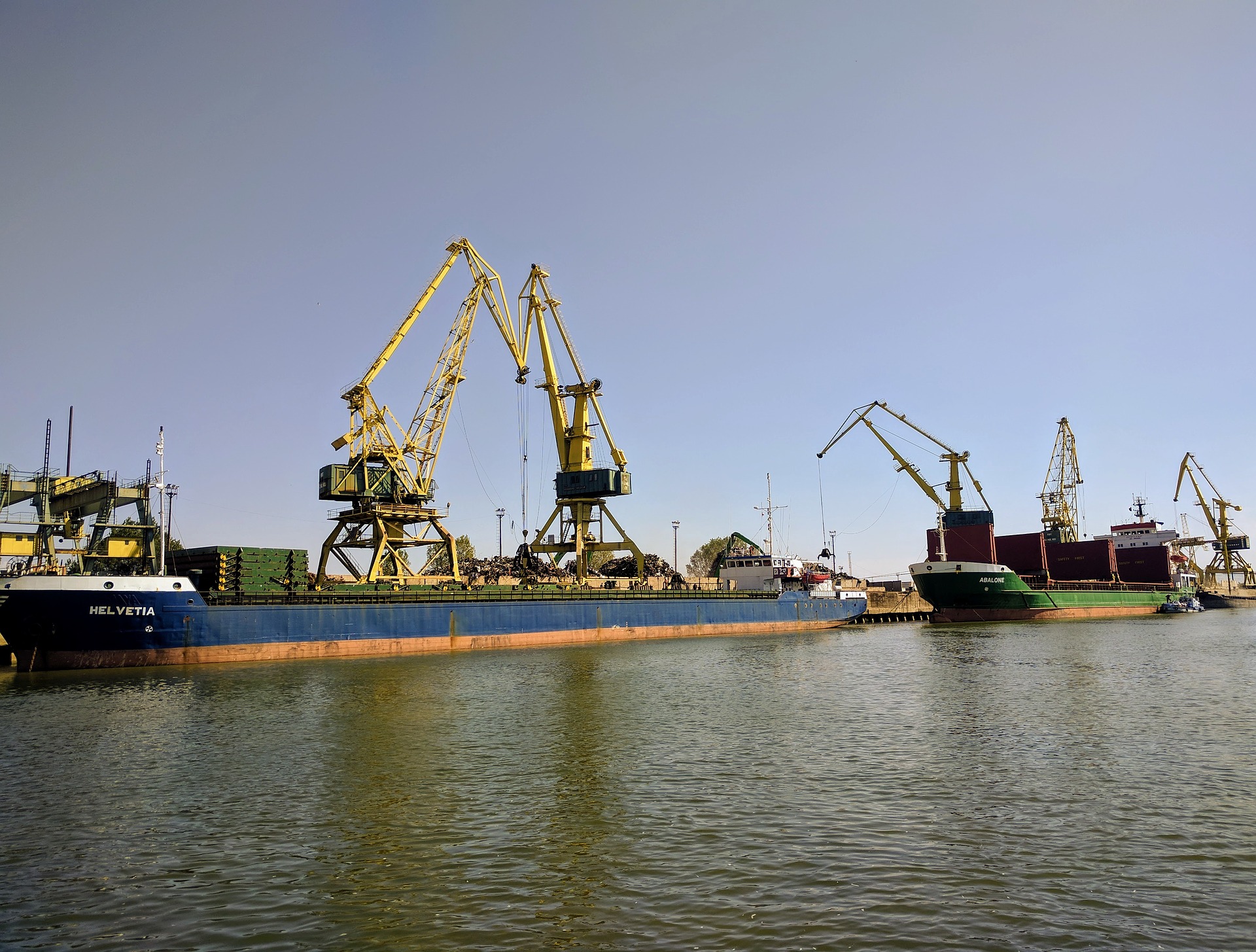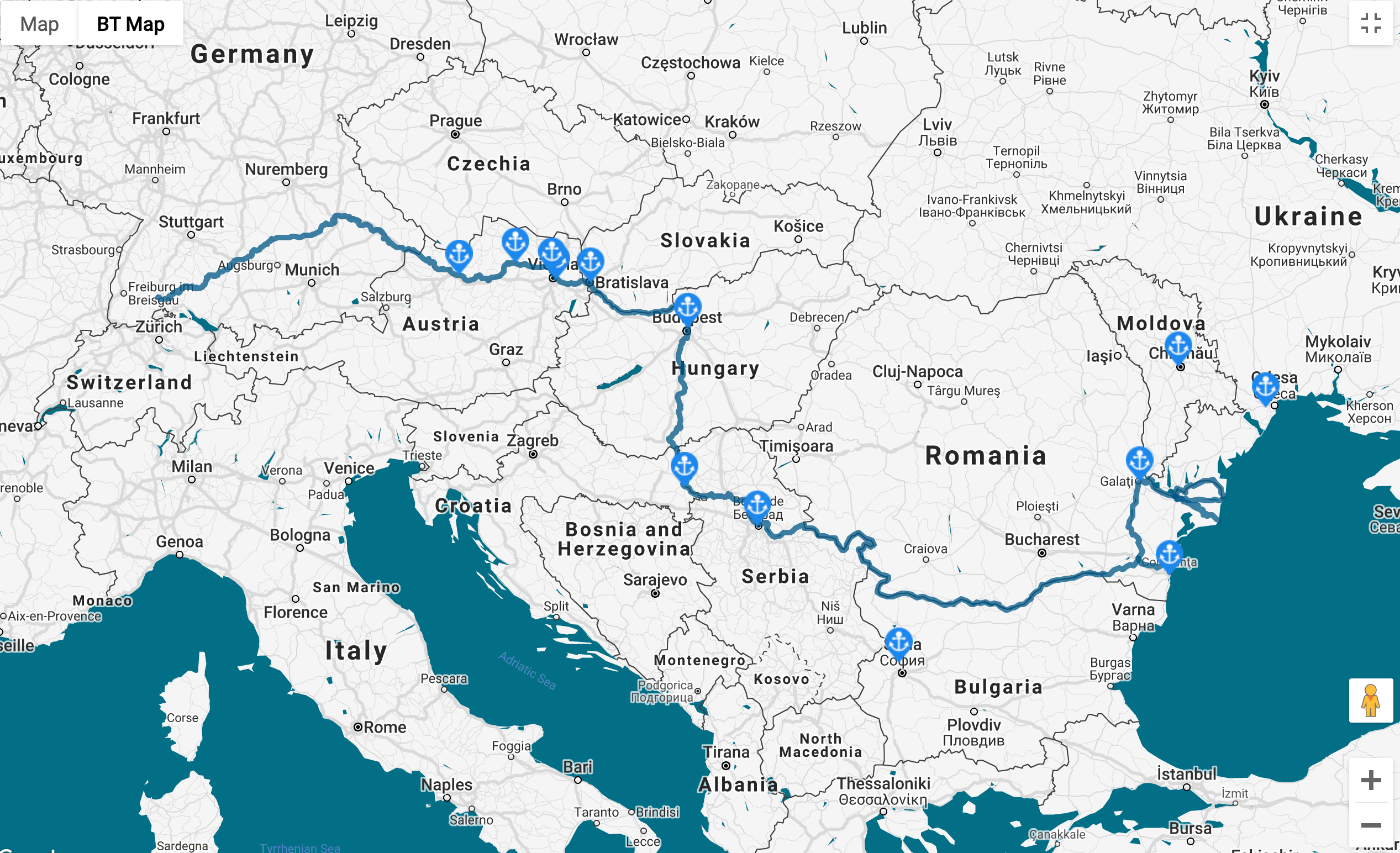DAPhNE - Improving the Danube’s inland waterway transport
10-08-2021
There are approximately 70 ports along the 2.414 km length of Danube. Out of them, only the ones in Germany and Austria have adequate infrastructure and management capacity to provide high-quality transport and logistics services. To help close the gap between the inland waterway ports along the Danube, DAPhNE project set up a knowledge sharing platform helping the Danube waterway to reach its full potential as a key transport corridor.
July 1, 2021
 Danube port in Galati, Romania. Image: Pixabay
Danube port in Galati, Romania. Image: Pixabay
Public ports downstream of Austria are facing a series of drawbacks. From obsolete infrastructure and poor connections to other major transport modes, such as roads and rail, to outdated equipment and insufficient waterway maintenance. Due to diverse legal and regulatory frameworks in the region and the lack of human resources and/or expertise, private sector investments in ports are difficult and the provision of high quality services rare. How to help Danube ports to become eco-friendly, well accessible and multimodal hubs, serving as catalysts of sustainable economic growth in the entire Danube region?
Closing the existing gaps between upper, middle and lower Danube ports
Connecting port authorities, regulatory bodies, port associations, logistics companies and universities, 23 partners in the DAPhNE project created a network to facilitate the development of Danube ports. After first investigating the issues regarding port legislation and public funding affecting both the private and public port sector all along the Danube, the project partners elaborated six national reports with a set of recommendations applying the ‘same river, same rules’ principle. Next, in order to increase overall efficiency of port administration processes, good practices in port administration were developed, collecting input from port owners, managers and users about the existing port management models. It is hoped that in the long run, thanks to better regulatory framework and efficient administrative procedures, a balanced development of Danube ports as buzzing economic centres will be secured.
As the next step, the DAPhNE partners worked to better understand the situation of the region's port infrastructure. By tracking technological infrastructure, development projects as well as the needs of selected ports along the TEN-T core network in the forthcoming period, the gaol was to provide a comprehensive package of the issues to be approached jointly. It is hoped that this will trigger the reform process, stimulate investments and innovation.
“Efficient and sustainable Danube ports are essential elements for a competitive Danube logistics system and thus vital for the economic development of the Danube region. DAPhNE has supported Danube ports in getting closer to becoming buzzing economic centres functioning as catalysts for economic growth and job creation.”
Manfred Seitz, Pro Danube International, DAPhNE project coordinator
 Image: DAPhNE
Image: DAPhNE
Danube Ports Network
Next to numerous other deliverables, it is the Danube Ports Network that lies at the heart of the project. Launched in 2018, the network brings together public and private ports and terminal operators from the Danube Region and is meant to be a permanent communication channel among its members. Through this platform, partner port organisations can effectively share knowledge, seek access to funding, and address complex issues facing the port sector. For example, during the DAPhNE project, DPN organized the first thematic conference dedicated to port digitalisation – a big step towards preparing for ports' digital future in the Danube region.
More recently, developed within the DIONYSUS project, which is a continuation of the DAPhNE project, DPN launched the "Survey on Port Statistics and COVID-19 Impact" aimed to collect information on port traffic in the midst of the pandemic during 2020. The survey, which is open for participating until 15 September 2021, could generate useful insights into the actual impact of the COVID-19 crisis on the Danube inland waterway transport. The survey furthermore touches upon topics linked to any kind of procedural restrictions that might have impaired a smooth transport flow.
“For the Danube Ports Network, the completion of the DAPhNE project marks the end of its pilot action phase (June 2018-June 2019) and the beginning of the start up phase (July 2019 - June 2022). We strongly believe this shall provide opportunities for further consolidating our strategic partnership and delivering the DPN's mission and objectives to the benefit of DPN's partners and the Danube Region port community at large.”
Janeta Toma, Senior Expert Danube Ports Network
 The official launch of the Danube Ports Network. Image: DAPhNE
The official launch of the Danube Ports Network. Image: DAPhNE
